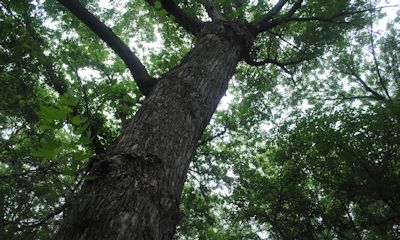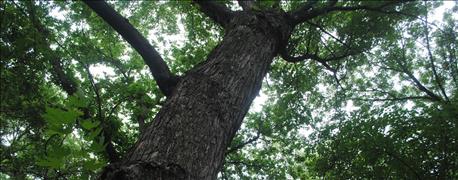

"Trees, specifically, working trees, are a vital part of conservation efforts to prevent wind erosion and water pollution as well as efforts to provide other ecosystem services we all depend on," says NAC director, Susan Stein.
Trees and agriculture just go together, and recognition of that fact is what the field of agroforestry is all about. Defined as the intentional integration of trees and shrubs into crop and livestock farming systems to create environmental, economic and social benefits, national agroforestry research efforts have been centered in Nebraska over the past few decades. The National Agroforestry Center, located on East Campus at the University of Nebraska in Lincoln, is crucial to the future usefulness of the farmstead forest. We recently visited with Susan Stein, the director of NAC over the past two years, about the Center's history, mission and research. We asked how NAC projects are impacting today's farmers and ranchers. Here is a Q and A from our conversation.
NF: What is the mission of NAC?
Stein: To provide America's natural resource professionals and landowners with knowledge and tools needed to accelerate the adoption of agroforestry.
NF: Why is the work of NAC so crucial?
Stein: Trees, specifically, working trees, are a vital part of conservation efforts to prevent wind erosion and water pollution as well as efforts to provide other ecosystem services we all depend on. Increased pressures on and stresses to America's farmlands are creating an even greater need for and benefits from working tree practices like windbreaks, riparian forest buffers, silvopasture, forest farming and alley cropping for instance.
NF: Why and how was NAC established and why was it located in Nebraska?
Stein: The 1990 Farm Bill authorized establishment of the Center for Semi-Arid Agroforestry, focusing on agroforestry needs of the Great Plains. The need, incentives and potential benefits from tree planting in the semi-arid and sub-humid environments have never been greater. Within a few years, the need for and benefits of integrating working trees into agricultural systems across the U.S. was recognized, so the name and geographic focus was broadened and the National Agroforestry Center was born.
~~~PAGE_BREAK_HERE~~~
NAC's ties to Nebraska and its location at UNL go back to renowned Nebraska botanist, Charles Bessey, who first proposed the idea of growing trees in the Sandhills region of the state. His proposal was supported by the U.S. Forest Service and resulted in the establishment of a tree nursery near Halsey in 1902. USFS was also responsible for helping to organize and implement the Prairie States Forestry Project from 1934-42, which was directed by Paul H. Roberts and headquartered in Lincoln.
In 1953, USFS established a research unit on UNL East Campus with an original focus to develop better trees and better performance in recognition of the stress from climate extremes that plants are exposed to in Nebraska and across the Plains. This unit is now the location of NAC.
NF: What are some of the latest research accomplishments and tools coming out of NAC?
Stein: There are so many. Carbon accounting for contributions of agroforestry and other agricultural tree resources in whole farm and ranch operations is one. The identification of agroforestry as a management option to increase adaptive capacity of ag operations and lands to shifting weather and climate conditions is another. Using agroforestry planning and design considerations to enhance pollinator habitat and reduce pesticide drift is also a big accomplishment.
NF: What is the latest to be released by NAC?
Stein: We just launched our AgBufferBuilder tool. This something one of our scientists has been working on for several years. It allows USDA Natural Resources Conservation Services personnel and natural resources professionals to use GPS information and topography to help farmers and ranchers design conservation buffers on their land. Many times, buffers are planted uniformly at an equal distance along waterways, not taking into account where the water is going to actually flow. This tool identifies areas where trees will be most effective at capturing runoff, siltation and potential chemicals.
You can learn more about Stein and NAC by visiting their website at nac.unl.edu or by reading a related article in the upcoming print issue of Nebraska Farmer.
About the Author(s)
You May Also Like






